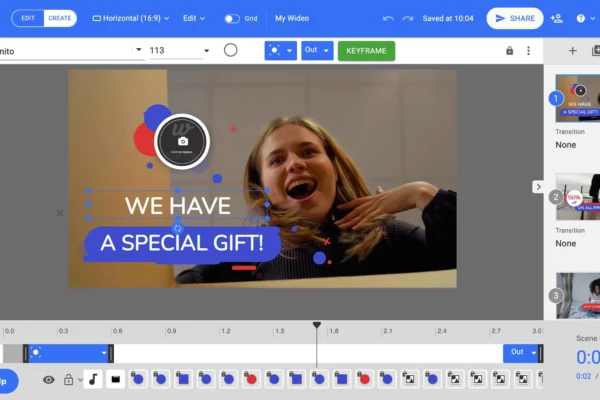Introduction
Video editing software has transformed the way we create, manipulate, and share videos. From amateur enthusiasts to professional filmmakers, these tools have become an essential component of the creative process. In this comprehensive article, we will delve into the history, evolution, and types of video editing software available, as well as the key features, benefits, and popular software options that have shaped the world of video editing.
- The Evolution of Video Editing Software
1.1 Early Days of Film Editing 1.2 Emergence of Non-Linear Editing 1.3 Pioneering Video Editing Software
- Understanding Video Editing Software
2.1 What is Video Editing Software? 2.2 Types of Video Editing: Linear vs. Non-Linear 2.3 Video Codecs and Formats 2.4 Key Video Editing Concepts: Timeline, Clips, and Tracks
- Key Features of Video Editing Software
3.1 User Interface and User Experience (UI/UX) 3.2 Importing and Organizing Media 3.3 Video Trimming and Cutting 3.4 Transitions and Effects 3.5 Audio Editing and Mixing 3.6 Color Correction and Grading 3.7 Text and Titles 3.8 Visual Effects and Motion Graphics 3.9 Multi-Camera Editing 3.10 Export and Rendering Options
- Types of Video Editing Software
4.1 Professional Video Editing Software 4.1.1 Adobe Premiere Pro 4.1.2 Final Cut Pro X 4.1.3 DaVinci Resolve 4.2 Intermediate Video Editing Software 4.2.1 Sony Vegas Pro 4.2.2 CyberLink PowerDirector 4.2.3 Pinnacle Studio 4.3 Free and Open-Source Video Editing Software 4.3.1 HitFilm Express 4.3.2 Shotcut 4.3.3 Lightworks 4.4 Mobile Video Editing Apps 4.4.1 iMovie (iOS) 4.4.2 Kinemaster (Android and iOS) 4.4.3 LumaFusion (iOS)
- Benefits of Video Editing Software
5.1 Creative Freedom and Flexibility 5.2 Professional-Looking Videos 5.3 Efficient Workflow and Time Savings 5.4 Collaboration and Teamwork 5.5 Audio Enhancement and Sweetening 5.6 Visual Effects and Color Grading 5.7 Multi-Platform Publishing
- Choosing the Right Video Editing Software
6.1 Identifying Your Editing Needs and Goals 6.2 System Requirements and Hardware Compatibility 6.3 Learning Curve and User-Friendliness 6.4 Budget Considerations 6.5 Support and Community 6.6 Trial and Evaluation Periods
- Video Editing for Various Industries
7.1 Filmmaking and Cinematography 7.2 Advertising and Marketing 7.3 Content Creation for Social Media 7.4 Educational and E-Learning Videos 7.5 Corporate and Business Videos 7.6 Event Videography 7.7 Gaming and Esports Videos
- Trends in Video Editing Software
8.1 Artificial Intelligence and Machine Learning 8.2 Real-Time Editing and Collaboration 8.3 360-Degree Video Editing and Virtual Reality 8.4 Mobile Editing Advancements 8.5 Video for Social Media and Short-Form Content
- Tips and Techniques for Effective Video Editing
9.1 Understanding Storytelling and Narrative Flow 9.2 Mastering the Art of Cutting and Transitions 9.3 Enhancing Visual and Audio Impact 9.4 Utilizing Color Grading and Visual Effects 9.5 Creating Compelling Titles and Graphics 9.6 Balancing Technical Precision and Creative Expression
Conclusion
Video editing software has become an indispensable tool for storytellers, creatives, and professionals seeking to deliver engaging and visually captivating videos. The continuous evolution of these tools has democratized video production, enabling anyone with a vision to bring their ideas to life. From simple mobile apps to sophisticated professional software, there is a video editing solution for every level of expertise and budget. As technology continues to advance, video editing software will undoubtedly push the boundaries of creativity and craftsmanship, opening up new possibilities and opportunities for video creators worldwide. Whether you are an aspiring filmmaker, a content creator, or a business looking to enhance your video marketing, finding the right video editing software can be the key to unlocking the full potential of your video projects.











Leave a Reply
You must be logged in to post a comment.